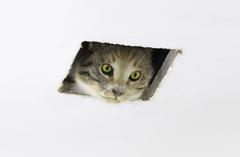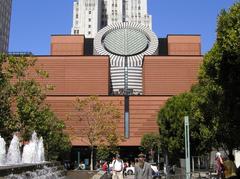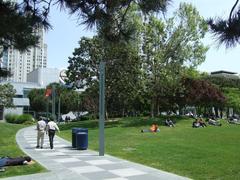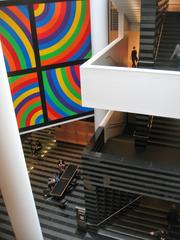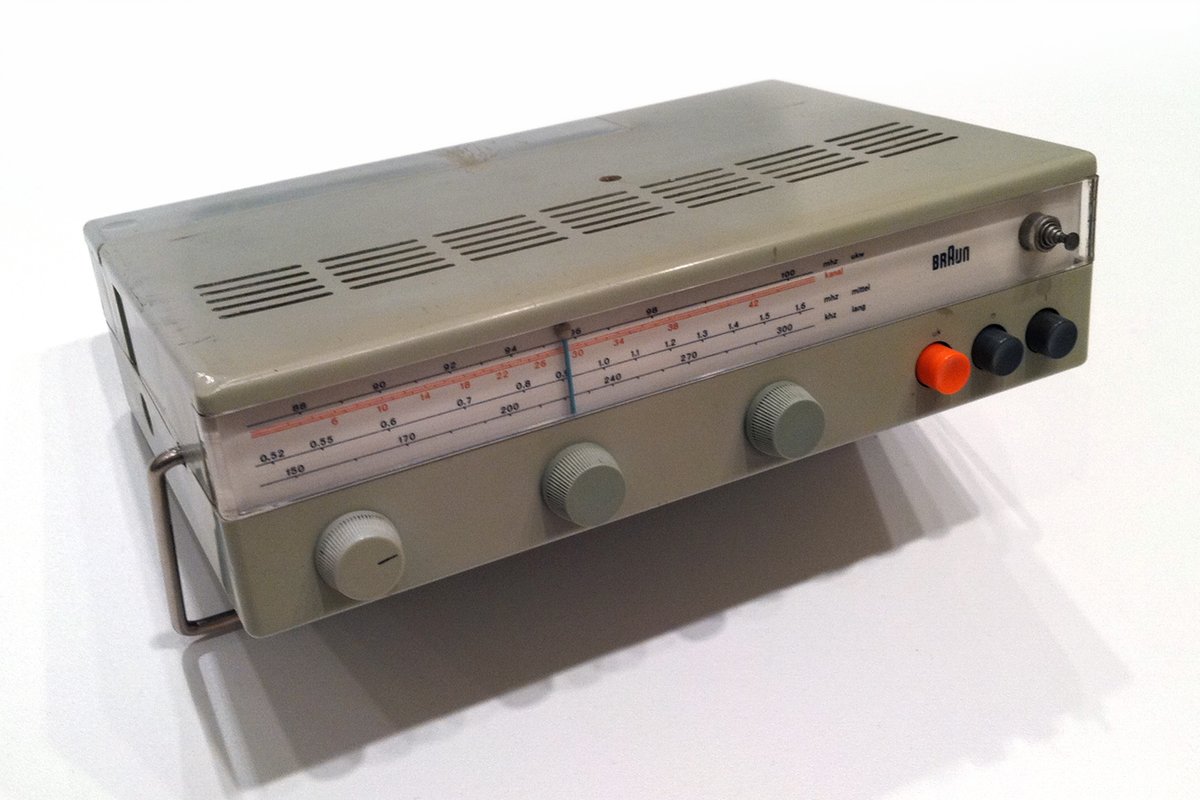
San Francisco Museum Of Modern Art
San Francisco Museum of Modern Art (SFMOMA) Visiting Hours, Tickets, and Guide
Date: 14/06/2025
Introduction
Located in San Francisco’s bustling SoMa district, the San Francisco Museum of Modern Art (SFMOMA) is a world-renowned institution showcasing modern and contemporary art. Since its founding in 1935, SFMOMA has become a cornerstone of the West Coast’s cultural landscape, featuring a collection of over 33,000 works and a commitment to accessibility, education, and architectural innovation. This comprehensive guide details SFMOMA’s history, collections, visiting hours, ticketing, and visitor amenities to help maximize your museum experience (SFMOMA Official, Wikipedia).
Table of Contents
- History and Significance
- Visitor Information
- Exhibitions and Must-See Installations
- Planning Your Visit: Tips and FAQs
- References and Further Reading
History and Significance
Founding and Early Years (1935–1975)
SFMOMA opened in 1935 as the San Francisco Museum of Art, becoming the first West Coast museum devoted exclusively to 20th-century art. Founding director Grace L. McCann Morley championed accessibility, with the museum originally located in the War Memorial Veterans Building. Early benefactor Albert M. Bender’s donations, including Diego Rivera’s The Flower Carrier (1935), established the museum’s core collection. SFMOMA pioneered West Coast exhibitions of artists like Henri Matisse and was among the first U.S. museums to develop a photography collection (Wikipedia, SFMOMA History, WikiArquitectura).
During WWII, SFMOMA’s galleries were used for the United Nations Charter conference, reflecting the museum’s civic importance. In 1975, “Modern” was added to its name to better reflect its mission (Museums Fandom).
Growth, Collections, and Curatorial Innovation (1975–1995)
Under directors Henry T. Hopkins and John R. Lane, SFMOMA expanded its curatorial departments, notably in Architecture + Design and Media Arts. Major gifts, such as the Elise S. Haas Collection and the Anderson Collection, as well as Clyfford Still’s donation of 28 paintings, cemented the museum’s growing prominence (Wikipedia, SFMOMA History). By the late 1980s, space constraints led to the decision to construct a new facility in SoMa.
The Mario Botta Building and Move to SoMa (1995)
In 1995, SFMOMA unveiled its striking new home at 151 Third Street, designed by Swiss architect Mario Botta. The building’s red-brick façade and oculus-topped atrium quickly became a San Francisco landmark, enabling the museum to showcase both its permanent collection and rotating exhibitions more effectively (Wikipedia, WikiArquitectura). That same year, SFMOMA launched one of the earliest museum websites (SFMOMA History).
Expansion and the Snøhetta Era (2016–Present)
To accommodate the renowned Fisher Collection and expanded programming, SFMOMA underwent a transformative expansion by Snøhetta, reopening in 2016 with more than double the gallery space and significant public areas. The new 10-story wing, with its undulating white façade, is a feat of contemporary architecture and sustainability, earning LEED Gold certification. Free ground-floor galleries and admission for visitors 18 and under underscore SFMOMA’s ongoing commitment to accessibility (Smithsonian Magazine).
Collection Highlights and Cultural Impact
SFMOMA’s collection now exceeds 33,000 objects, spanning painting, sculpture, photography (the Pritzker Center is the largest dedicated photography space in the U.S.), architecture, design, and media arts. Notable artists include Matisse, Rivera, Kahlo, Pollock, Warhol, and Bay Area innovators like Ruth Asawa. The Fisher Collection’s long-term loan solidifies SFMOMA’s international stature (Google Arts & Culture, Smithsonian Magazine).
Significance in the Art World
SFMOMA is consistently recognized among the world’s leading modern art museums, ranked 14th in the U.S. by the Washington Post in 2024. The museum has hosted the first solo exhibitions of major artists and serves as a platform for advancing photography, architecture, and design as fine arts. Its robust educational and community programs deepen its impact beyond the galleries (Google Arts & Culture).
Visitor Information
Visiting Hours
- Tuesday – Sunday: 10:00 AM – 5:00 PM
- Thursday: Extended hours until 9:00 PM
- Monday: Closed
Hours may vary for holidays and special events. Consult the SFMOMA official hours page for updates.
Ticket Information
- Adults (25–64): $30
- Seniors (65+): $25
- Youth (19–24): $23
- Children (0–18): Free (still requires a ticket)
- Members: Free
Some special exhibitions may require additional fees. Purchase tickets in advance at the official SFMOMA ticketing page to avoid lines and secure timed entry, especially on weekends and free days.
Free Admission Days: SFMOMA offers free admission for Bay Area residents on select days (typically the first Thursday of each month from 12 PM–8 PM) and for all visitors 18 and under (SFMOMA Visitor Info).
Directions and Parking
- Address: 151 Third Street, San Francisco, CA 94103
- Public Transit: BART (Montgomery Street Station), Muni Metro, and several bus lines serve the area.
- Parking: Nearby options include the SFMOMA Garage (147 Minna St) and Fifth & Mission Garage. Public transit is recommended due to limited parking (SFMOMA Visitor Info).
Accessibility
SFMOMA is fully accessible with:
- Elevators and ramps on every floor
- Free wheelchair rentals (first-come, first-served)
- Assisted listening devices and services for visual and hearing impairments
- Accessible restrooms and family restrooms on multiple floors
- Service animals are welcome
For details, see SFMOMA Accessibility.
On-Site Amenities
- Dining: Sightglass Coffee Bar, Café 5 (California cuisine), and Grace (French-American restaurant). Reservations recommended for Grace.
- Museum Store: Offers art books, design objects, and gifts; accessible from the street.
- Lockers/Coat Check: Available near the entrance.
- Wi-Fi: Free throughout the museum.
Guided Tours and Programs
- Docent-led Tours: Daily highlights, family-friendly, and multimedia options are available. Check schedules and book in advance if possible.
- Workshops and Events: Frequent lectures, artist talks, and workshops. See the events calendar.
Nearby Attractions
Expand your cultural itinerary with a visit to:
- Yerba Buena Gardens
- Contemporary Jewish Museum
- Museum of the African Diaspora
- Moscone Center
- Ferry Building Marketplace
- Union Square
- Embarcadero waterfront
Exhibitions and Must-See Installations
Major Exhibits (2025)
- Ruth Asawa: Retrospective (April 5–September 2, 2025): The first comprehensive national and international museum retrospective of the Japanese American sculptor (SFMOMA Press Release, The Collector).
- Kunié Sugiura: Photopainting (from April 26, 2025): The artist’s first major U.S. survey, with innovative works blending photography and painting (SFMOMA Press Release).
- People Make This Place: SFAI Stories (from July 26, 2025): Celebrating the legacy of the San Francisco Art Institute through works by over 50 artists (SFMOMA Press Release).
- Digital Dreams (April–November 2025): Exploring technology in art through digital and interactive installations.
Must-See Installations
- Olafur Eliasson’s One-Way Colour Tunnel: An immersive, kaleidoscopic artwork beloved by all ages (Secret San Francisco).
- The Living Wall: A 35-foot vertical garden with over 19,000 plants—a highlight of the museum’s sustainability efforts (Time Out).
- Fifth-Floor Sculpture Garden: Outdoor space with rotating sculptures and panoramic city views (SFMOMA Press Release).
Collection Highlights
- Paintings and sculptures by Jackson Pollock, Frida Kahlo, Henri Matisse, Mark Rothko, Andy Warhol, and Ruth Asawa
- Photography collection featuring Ansel Adams, Dorothea Lange, and Cindy Sherman
- Architecture and design objects, including works by Charles and Ray Eames
- Media arts installations by Nam June Paik, Bill Viola, and Bruce Nauman
Planning Your Visit: Tips and FAQs
Tips for a Memorable Visit
- Best Times: Weekday mornings and Thursday evenings tend to be less crowded.
- Duration: Plan for 2–4 hours. Use museum maps to prioritize galleries.
- Breaks: Utilize seating areas, outdoor terraces, and cafés to avoid art fatigue.
- Children & Families: Free admission for visitors under 18; family guides and activities available.
- Photography: Allowed in most areas for personal use. No flash, tripods, or selfie sticks.
Frequently Asked Questions (FAQs)
Q: What are the SFMOMA visiting hours?
A: Tuesday–Sunday 10:00 am–5:00 pm; Thursdays until 9:00 pm; closed Mondays (SFMOMA Visitor Info).
Q: How do I buy tickets?
A: Purchase online at SFMOMA Tickets or at the entrance. Advance tickets recommended.
Q: Is SFMOMA accessible for visitors with disabilities?
A: Yes, with full ADA compliance, including elevators, accessible restrooms, and free wheelchair rental.
Q: Are guided tours included?
A: Some tours are complimentary; check schedules online.
Q: Can I take photos?
A: Personal, non-flash photography is allowed in most galleries.
Q: What are nearby attractions?
A: Yerba Buena Gardens, Ferry Building, Union Square, and more.
References and Further Reading
- SFMOMA Official Website
- SFMOMA History
- Wikipedia: SFMOMA
- Smithsonian Magazine: Ten Things to Love About SFMOMA
- SFMOMA Press Release: Must-See Exhibitions Spring and Summer 2025
- Japantown Cultural District: Ruth Asawa Retrospective
- Museums Fandom: SFMOMA
- WikiArquitectura: SFMOMA Building
- SFMOMA Visitor Info
- SFMOMA Accessibility
- Secret San Francisco
- Time Out: Best San Francisco Museums
- The Collector
- Google Arts & Culture: SFMOMA

